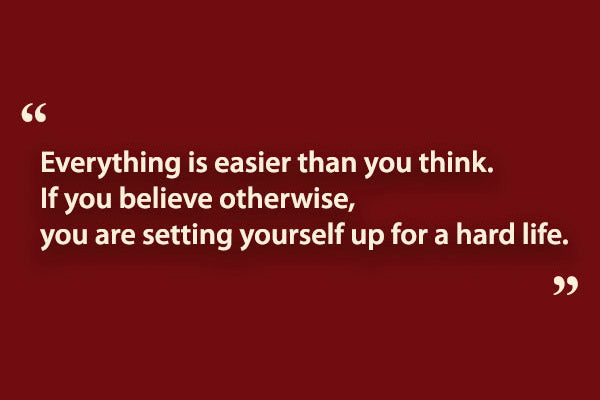“Everything is easier than you think. If you believe otherwise, you are setting yourself up for a hard life.”
Learning should not be as hard as you think. There is a method to the art and just like any skill, learning to learn needs practice and mastery. It is much like speed reading. If you know how to read faster, you can end up reading more books in a given time. Similarly, if you learn how to learn efficiently you can spend less time doing the learning and more time enjoying what you have learned.
As a trainer, the topic of learning to learn is even more important since it is not only beneficial to you, but it also helps you to improve your training. As such, it is worth investing time in.
In this article, you will be introduced to seven highly effective techniques that help you maximise learning in a given time. The following methods are presented as if you are applying them to yourself, but you should consider how you can take advantage of them for your learners in a training environment.
Know Why You Are Learning
Learning can be hard and you need motivation for it. The best motivation is to know why you are learning something. Visualise the end when you have learned a skill to a satisfactory level. How would it impact your life? What do you get out of the new skill? How does it improve your quality of life? How does it help you financially? How about social aspects and becoming part of a new community of people who have a shared interest with you?
The more you know why you are learning, the more likely you are to put the hard work into learning the new skill. Most often, people drop out half way through a learning experience when they have lost sight of why they are there. They get frustrated by lack of progress, they are not conscious of their aspirations and gradually start to procrastinate on learning activities until one day they find that they are no longer spending much time on the subject and have moved on to something else. All that time spent on this subject could be considered lost, so it is important to know why you are learning to avoid frustration down the line.
Actions for You:
- Define your objective of learning.
- Visualise a future when you have learned the skill at an ideal level.
- Define what you are willing to put into the task of learning.
Immerse Yourself in the Environment
Learning should be continuous to be effective. You need to be constantly reminded of facts, data and information related to the task at hand. For example, if you are learning a new language, you could listen to a podcast of someone talking in that language while you are preparing dinner; you could watch movies of that language with subtitles on; you could cover a wall with post-it notes reminding you of words you need to memorise. In short, the environment can automatically come to help you to learn while you are engaged in other activities.
Actions for You:
- Define how you can engineer your environment to enhance your learning.
- Identify activities that you can do to help learning while multi-tasking other errands.
- Visualise the ideal environment to learn, then take actions to create that environment as closely as you can.
Maintain a Feedback Loop
Learning happens when you engage in an activity where you can measure your progress. With no measurement, you won’t be able to tell if you are improving. With measurement, you can take corrective actions to improve your performance. Hence, you need a feedback loop. A feedback loops requires three components—current state, ideal state and corrective action. This sounds easy, though in practice it is often neglected which can be the number one cause of reaching a skill plateau. People often stop learning when they have lost sight of their feedback loop and instead just participate in the activity for enjoyment with no regard to improving their skills. Learning stops when a person is not challenged or when performance is no longer measured.
Actions for You:
- Describe how you measure your performance for a given skill.
- Identify your ideal state, your current state and what actions you can take to improve your performance.
- Examine yourself on skills you want to learn and see if you are stuck at a skill plateau in any of them. If so, look for the presence of a feedback loop which is likely to be missing. Identify steps to re-establish the feedback loop.
Find a Learning Partner
One of the greatest motivators for learning is to obtain a learning partner who is somewhat at your level and is just as enthusiastic to learn as you are. The learning partner can be both supportive and competitive giving you plenty of incentives. It creates external commitment which means that your partner can push you to stay on the topic for longer.
In addition, people learn differently. A study partner can expose you to new methods of learning you have not considered before which can lead to breakthroughs for you.
A related method is to join a club of enthusiastic learners centred on the skill you are aiming to master. A club, as a whole, can act as a study partner if you regularly turn up at their events. You will feel you need to report back on your progress while at the same time you can get tips on exercises, methods and approaches. A club offers access to people who know more about the topic than you do and usually through their enthusiasm are willing to share their experience with people who are new to the scene.
Actions for You:
- Identify an ideal study partner and approach him/her to partner with you.
- Identify local clubs or meet up groups you can join that provide you an ideal environment to learn and connect with potential study partners.
Use Micro-Challenges and Mini-Motivations
You have identified your destination and you know where you are. To get there however, you need to have a number of goal posts that help you navigate your way to a given destination. Without these goal posts, the task may appear daunting which can inevitably lead to procrastination and dropping out altogether. Micro-challenges make learning a more manageable activity. It is easier to see what you need to do in five steps than in one giant step. The great benefit of micro-challenges is that they can be tied into mini-motivations. You can reward yourself to achieve a goal. This can be extrinsic or intrinsic. Extrinsic motivation can be buying yourself a little gift or an experience or just making money out of the new skill. Intrinsic motivation is about achieving set goals by yourself and getting the satisfaction out of reaching them. For example, you may give yourself a token of achievement when you have memorised 500 words of a new language.
Apps and gamification can be tremendously valuable in setting up micro-challenges and mini-motivations. Not long ago, none of these systematic measurement and gamification methods were available. Make the best of them so you learn faster than people in previous eras.
Actions for You:
- Identify a series of micro-challenges to help you progress towards your ultimate goal. Aim for five to ten goals but no more. You don’t want a long list of micro-challenges that can overwhelm you. Enquire from your study partners or research to get ideas for these micro-challenges or exercises.
- Identify a variety of mini-motivations. How can you reward yourself so it motivates you to go through the task? You know better than anyone else what motivates you; make use of the knowledge and apply it to yourself.
- Research and identify apps and tools you can use to apply self-measurement, data-analysis and gamification on the skills you are mastering.
Expose Yourself to the Subject 24/7
Continuous exposure to a field is more important than a burst of activity followed by long breaks. To learn, your brain’s neural network needs to be activated on a continuous basis so that what you learn sticks. Research shows that spaced repetition can be quite effective for learning. Spaced repetition suggests that you go through a learning task, such as memorising the meaning of series of words, and then you revisit and test yourself a few days later. You continue doing this until the words are memorised and transferred from your short-term memory to your long-term memory.
In contrast, if you are learning windsurfing and every year you go on a one week holiday to practice it, you cannot expect much progress. Although you learn a great deal in one week of sustained windsurfing, much of it could be lost if you don’t practice for the rest of the year. You may reach a skill plateau. You may continue enjoying the sport, but it is unlikely for you to get better and progress forward.
Actions for You:
- Schedule a routine so you can periodically spend time on the learning task. It is critical not to miss any sessions. Think of motivators and external commitments that can help you with this. For example, meet up with a study partner on a regular basis to practice. Alternatively, use apps or tools that make it more difficult for you if you miss a session. For example, if you don’t practice your 50 words in a given session, in the next session you must practice 100 words to keep up.
- Record your activities in a journal over a week and analyse it. Are you practicing regularly?
Use Variety of Learning Tools
There are many different ways to learn a topic. Usually, there is no one ideal method. The more you are aware of various methods, the easier it is to find one that works best for you. Often, you need to give a method a chance before you can see if it works. Don’t spend only a few minutes on a new method expecting miracles. Spend some time practicing using new techniques and look for variations that make the method suitable for you.
Constantly be on the lookout for methods of learning. Don’t only focus on modern methods; sometimes forgotten older methods are vastly superior. For example, you can learn a great deal about drawing a human figure from the artists of the 19th century that were masters of the art; much more so than you can from many artists of today.
Actions for You:
- Identify where you can research to learn about new learning tools you can employ.
- Ask your study partners what tools they have found most effective.
- Obtain training tools and learn how to use them. Avoid high expectations and give yourself a chance to fully utilise them before dismissing them.
- Narrow the choice of tools to a select few favourites so you can stay focused on these tools and use them often enough. Using too many tools has a risk of not using the same tool often enough to be effective.
- Schedule a review of your tools in a few months, dismiss those that proved to be ineffective and add new ones. Repeat the review cycle periodically.
Soft Skills Training Materials
Get downloadable training materials
Online Train the Trainer Course:
Core Skills
Learn How to Become the Best Trainer in Your Field
All Tags
Training Resources for You

Course Design Strategy
Available as paperback and ebook

Free Training Resources
Download a free comprehensive training package including training guidelines, soft skills training activities, assessment forms and useful training resources that you can use to enhance your courses.

Our Comprehensive Guide to Body Language

Train the Trainer Resources
Get Insights - Read Guides and Books - Attend Courses
Training Materials
Get downloadable training materials on: Management Training, Personal Development, Interpersonal Development, Human Resources, and Sales & Marketing














Leave a comment
All comments are moderated before being published.
This site is protected by hCaptcha and the hCaptcha Privacy Policy and Terms of Service apply.